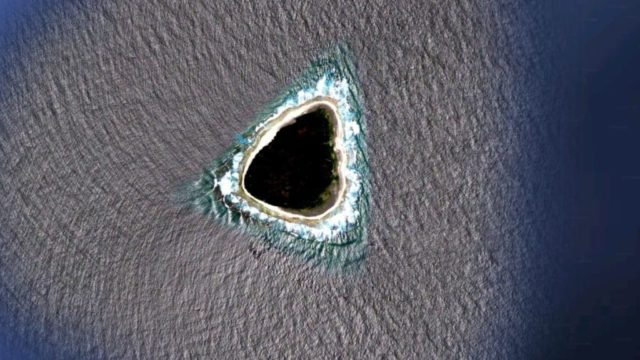:strip_icc()/i.s3.glbimg.com/v1/AUTH_59edd422c0c84a879bd37670ae4f538a/internal_photos/bs/2023/f/c/plMhqURFSzo7jSOKEEQQ/bbc-esculturas-01.jpg)
Searching for evidence of his “unique ideas”—such as that of Egyptian culture originating in Mexico’s Yucatan Peninsula—explorer Augustus Le Plongeon and his wife Alice Dixon made a discovery in southeastern Mexico in 1875.
The French-American and his wife were on a two-year expedition through the jungle, where they entered the ruins of the Mayan civilization.
They made maps, took one of the first sets of photographs of temples, and documented the murals they found.
They also discovered some sculptures and other objects from the ancient civilization.
Although they found no evidence for their theories about the origin of the Egyptians, one discovery, at Chichen Itza, was one of the most surprising: an effigy of a semi-recumbent man.
Le Plongeon named this statue “chac mool”, which in Maya means “red tiger”.
Since then, discoveries of Chac Mul sculptures have continued not only in the Maya region but in many other places in Mesoamerica, a cultural region extending from central Mexico to Costa Rica that was the cradle of great civilizations.
For decades, archaeologists have tried to answer some questions about this statue, such as who is represented in it, what its function is, what is the origin of the image and why these sculptures appear in so many different sites. These questions have been the subject of great discussions and studies.
“There are speculations about many things, but we have no scientific data,” archaeologist José Luis Ponzo Díaz tells BBC News Mundo. He is responsible for leading the investigation team into the recent discovery of a sculpture of this type in the city of Patzcuaro, in the state of Michoacán, Mexico.
“This discovery of Mol Chak is the tip of the iceberg that will allow us to really understand these pieces. That’s what I find so exciting about this discovery,” he says.
He explains that they are using technological and scientific tools that were not available before.
The Le Plongeons found and named the carving in 1875, but this piece – the most famous – was just one of many found dating from approximately 600 BC to after 1500 AD.
Despite being a relief sculpture, found in relevant places in palaces and pre-Hispanic cities, the Chac Mul is not represented or explained in historical documents from the Toltec, Aztec, Maya, Purepecha or other major Mesoamerican cultures.
This prompted archaeologists to formulate theories about various aspects, according to researchers Alfredo Lopez Austin and Leonardo Lopez Lujan in a wide-ranging documentary collection of studies of these carvings published in the 2000s.
As for their origin, archaeologists say, it has been debated whether they correspond to the cultures of central Mexico, the Maya region, or northern Central America. They also discuss whether they were born in periods such as Classical or Postclassical.
Experts disagree about the function of the image. “(We wonder) whether this eccentric statue was used as an offering table, as a container for hearts, or as an offering stone,” experts say.
There is also disagreement as to whether the figure represented is a sacrificial victim, a soldier, a priest, a historical figure, a “god-man”, or a divine messenger or god.
There has also been archaeological debate about the appearance of the different objects found: where the head is facing to the left or right, which face it represents, its decoration, the position of the abdomen and legs and even the variety of bases they contain.
“The form and meaning of chac mool changes depending on its geographical, temporal and cultural location,” point out Lopez Austin and Lopez Lujan.
The fact that it is a piece found in different cultures, with different rituals and worldviews, adds questions.
The consensus of various studies provides some clues about mole chak.
The fact that one of the oldest pieces (between 600 and 900 AD) was documented in a region of northern Mesoamerica called Chalchihuites may be an indication of Chac Mul’s “journey” over the centuries through diverse cultures and territories.
In the Toltec culture, a large number of sculptures of this type were found in Tula. This city was instrumental in influencing other dominant cultures, such as the Mexicans and Mayans.
“These sculptures in Tula are very important,” says Ponzo Díaz. “They are found in contexts such as palace doors or squares, not just in pyramids, which is what is often thought of.”
“The important point is that migrations were the driving force that explains many of these objects in Mesoamerica. It appears that there were migrations from the north to the center and west that brought these types of sculptures,” says the archaeologist.
The Toltecs settled hundreds of kilometers from the Yucatan, but are known today to have influenced the Maya in places such as Chichen Itza, who in turn influenced the peninsular region and what is now Mesoamerica.
“Everyone associates chuck mole with the Mayans, but it’s actually an influence that comes from central Mexico,” says Ponzo Diaz.
Another consensus is that Chuck Mole is an intermediary figure or messenger “between the world of men and the world of gods.”
“It is a piece that was intended to contain offerings,” explains the archaeologist, because of the obvious altar or flat surface (some in the form of a container) on which these figures were found.
Lopez Austin and Lopez Lujan state that research conducted in the last century indicates that they could have been used for offerings and sacrifices. But only today available technology and science can provide more certainty.
“There are hypotheses that are repeated and become facts, but there is no scientific data to talk about their functions. This is what we are verifying with a team of archaeologists, restorers, chemists, volcanologists and IT specialists. We are moving forward,” says Ponzo Díaz.
Although the name Chuck Mole, arbitrarily given to it by explorer Le Plongeon, has been enshrined in scientific literature, current knowledge may also give it a new name.
“Waxanote,” which means “he who sits in the courtyard” in the language of the Purepecha people who controlled the Mexican state of Michoacan, is a replacement for the piece at Patzcuaro.
As happens in many cases, the discovery of the chuck mole in the city of Patzcuaro last month was by chance, during excavations at a construction site.
It is the first sculpture of this type to be found in the context of the Purépecha culture that lived there, although other pieces have already been found in the state of Michoacan throughout the past century.
For Ponzo Díaz and his team, the condition of this piece and the discovery of supposedly very ancient elements, such as charcoal, will allow us to draw better conclusions about the questions surrounding these sculptures.
“The discovery of this Mul Chak is the tip of the iceberg that will allow us to really understand these pieces,” says the archaeologist. “And that is what I find so exciting about this discovery.”
“Archaeology is going through a very interesting moment because there are a large number of technological and scientific tools that can be applied to the study of the past. Today we can ask ourselves questions that would have been impossible to answer 20 or 30 years ago.”

“Proud explorer. Freelance social media expert. Problem solver. Gamer.”






